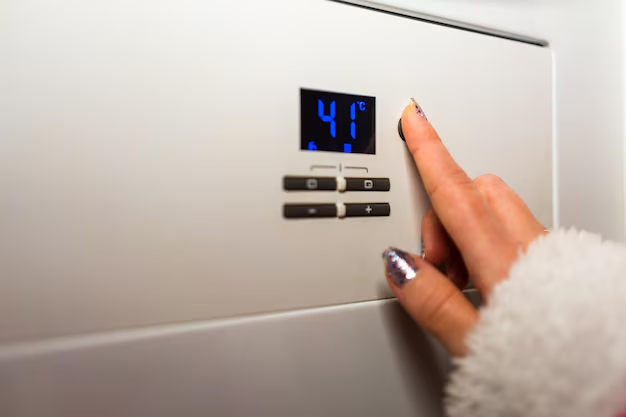Mastering Temperature Settings on Your GE Refrigerator: A Comprehensive Guide
Your refrigerator is one of the most essential appliances in your kitchen, keeping your food fresh and safe. But ensuring that it operates efficiently requires a keen understanding of temperature settings. If you own a GE refrigerator and find yourself puzzled about adjusting its temperature, you've come to the right place. In this guide, we'll explore not only how to adjust these settings but also dive into related aspects to ensure your food stays at its best.
Why Proper Temperature Matters
❄️ The Science Behind Refrigeration
Refrigeration works by maintaining a cool environment that slows down bacterial growth, thereby extending the shelf life of your perishables. The right temperature ensures that your foods remain fresh and safe to consume.
📊 Optimal Temperature Ranges
For a refrigerator, the general recommendation is to keep the temperature at or below 40°F (4°C). Meanwhile, freezers should be set at 0°F (-18°C) to keep foods frozen and safe for long-term storage.
Adjusting Temperature on a GE Refrigerator
🛠 Steps to Adjust GE Refrigerator Temperature
Finding the right balance for your refrigerator is crucial for optimal food preservation. Here’s how to adjust the settings on a typical GE refrigerator:
- Locate the Temperature Control Panel: Usually, it’s inside the fridge on the upper right side or at the front, depending on your model.
- Understand the Control Display: GE refrigerators often have either a digital display or a dial for setting temperatures.
- Adjusting via Digital Display:
- Press the "Temperature" button to toggle through different settings.
- Allow 24 hours to fully stabilize to the new temperature.
- Adjusting via Manual Dial:
- Turn the dial clockwise to decrease the temperature and counterclockwise to increase it.
- Make small adjustments and provide time for stabilization.
🔄 Common Trouble Spots
- Temperature Fluctuations: Frequent opening of the door or overloading the fridge can cause temperature shifts.
- Location: Ensure your fridge isn’t in direct sunlight or near heat sources, which can affect its efficiency.
Enhancing GE Refrigerator Efficiency
📦 Organizing Your Refrigerator
- Airflow: Avoid overcrowding. Air needs to circulate for optimal cooling.
- Zones: Take advantage of different refrigerator sections, with the upper shelves being ideal for ready-to-eat foods and lower shelves for raw ingredients.
💡 Maintenance Tips
- Regular Cleaning: Dust condenser coils and clean interior surfaces regularly to maintain efficiency.
- Gasket Check: Ensure door seals are airtight to prevent warm air infiltration.
Dealing with Temperature Issues
🔧 Troubleshooting Common Problems
Refrigerator Too Warm:
- Solution: Check the airflow, door seals, and digital settings. Adjust shelves to improve air circulation.
Freezer Ice Formation:
- Solution: If you notice frost build-up, it’s likely due to high humidity or a door left ajar. Regularly defrost to prevent blockages.
Inconsistent Temperatures:
- Solution: Ensure the thermostat is functioning correctly. If problems persist, consult a service technician.
🤝 When to Call a Professional
Persistent issues like strange noises, continuous running, or temperature changes not reflected by the control settings indicate that professional maintenance may be needed.
Getting the Most Out of Your GE Refrigerator
🛒 Shopping and Storage Tips
- Pre-Chill Groceries: If possible, buy pre-chilled groceries when stocking the fridge as this helps to maintain the internal temperature.
- Leftover Love: Store leftovers in shallow containers to cool down faster, reducing the load on your fridge.
✅ Summary: Key Takeaways for GE Refrigerator Temperature Settings
- Locate and understand your control panel.
- Adjust settings gently and allow time to stabilize.
- Maintain airflow and efficiency with proper organization.
- Regular maintenance is key to longevity and performance.
- Troubleshoot common issues before seeking professional help.
Wrapping It Up
Understanding how to adjust and maintain your GE refrigerator’s temperature is a critical skill for modern kitchen mastery. By applying these pointers, you not only ensure your food remains fresh but also enhance the appliance's lifespan. Remember, simple steps today can prevent headaches tomorrow!
Quick Tips Summary:
- 🌡️ Temperature Range: Keep the fridge at 40°F (4°C) and freezer at 0°F (-18°C).
- 📈 Regular Checks: Frequently check temperatures to ensure they remain consistent.
- 🌬️ Clear Paths: Keep vents unobstructed for efficient cooling.
- 🔄 Routine Maintenance: Conduct regular cleaning and gasket inspections.
By sticking to these guidelines and understanding the nuances of your GE refrigerator, you're taking a significant step towards a well-organized, efficient, and stress-free kitchen. Happy refrigerating!
